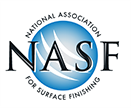California Rule to Transition Hexavalent Chromium Processes to Trivalent Chromium
The California Air Resources Board (CARB) proposes agressive deadlines for transitioning to trivalent chromium.
#regulation
The California Air Resources Board (CARB) held its Technical Working Group Meeting #4 in late April regarding the rulemaking to transition hexavalent chromium plating to trivalent chromium. They indicated that they are now looking at the following deadlines for transitioning to trivalent chromium:
- January 1, 2023 for decorative chromium plating,
- January 1, 2027 for functional chromium plating, and
- January 3, 2032 for chromic acid anodizing
These regulatory deadlines are very aggressive and unrealistic given the current state of trivalent chromium process technologies and market acceptance of trivalent chromium for many applications.
At this time CARB is not looking at any other requirements for any other type of hexavalent chromium processes, but may look at these processes at a later date. NASF did ask CARB officials to clarify that other hexavalent chromium processes such as plating on plastic, chromate seals and passivation are not covered by this rule and would not be subject to the trivalent chromium transition deadlines.
CARB expects to complete its draft proposed regulatory language for the rulemaking by mid-May. Following the release of the draft rule language, stakeholders will have an opportunity to submit informal comments to CARB officials on the draft rule. CARB also expects to have three or four more Technical Working Group Meetings before the rule is formally proposed in mid-October 2021.
The CARB officials acknowledged that the schedule is aggressive and may not be achievable due to the lack of feasible trivalent chromium processes for some applications. They did request written comments from the industry on possibly developing a procedure to identify criteria whereby facilities could demonstrate the infeasibility of meeting these deadlines. Information such as availability of trivalent chromium processes for many applications, potential economic impact (such as facilities closing or customers sourcing hexavalent chromium plating out of state), costs for transitioning to trivalent chromium, market acceptance of trivalent chromium processes, and alternative control measures to achieve similar hexavalent chromium emissions reductions.
NASF and its California Chapters will continue the ongoing dialogue with CARB officials and will have an opportunity to provide informal comments to CARB over the next several months. As referenced above, the formal written comments will be due in October/November of this year. The industry also will continue its letter-writing campaign to CARB members, state legislators, and customers regarding the significant negative impact this rule will have on surface finishing in California and the California economy. In addition, NASF is reaching out to customers in several key supply chains, including defense, aerospace and automotive.
NASF and its California Chapters will continue to work with state officials and industry partners to develop a rule that is protective of human health and the environment and is technologically feasible and economically sustainable. For more information on this rulemaking, please contact Jeff Hannapel with NASF at jhannapel@thepolicygroup.com.

This update is courtesy of the National Association for Surface Finishing (NASF). For more information or to become a member, visit nasf.org.
RELATED CONTENT
-
Best Plating Practices for the Application of Brush Plated Zinc-Nickel
Brush plating is an industrial electroplating process designed for demanding OEM and repair applications, without the use of an immersion tank. This presentation demonstrates the best practices for brush plating zinc-nickel to meet the ASTM standards of hydrogen embrittlement and corrosion protection. From preparatory steps to the application of a trivalent chromium conversion coating, the proper plating techniques needed to meet the customers’ demanding requirements are discussed.
-
Is Your Electroplating Waste Hazardous?
Some that bears precious metals is, and there are a host of regulations to consider when recycling.
-
Trivalent Chrome Overview
As the finishing industry begins to move away from the use of hexavalent chromium to trivalent chromium, what factors should finishers consider as they make new investments? Mark Schario, chief technology officer for Columbia Chemical offers a helpful overview of this complicated topic.















